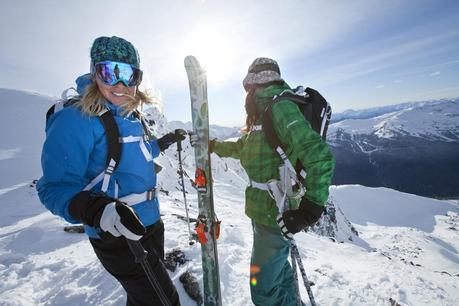Introduction
Whether you’re a novice skier or you’re an expert on the slopes or trail, the right ski equipment is essential to a safe, enjoyable ski experience. Skiing can be expensive, with ski setup prices ranging from hundreds to thousands of pounds. Leasing or renting equipment is a money saving alternative for beginning skiers. However, buying cut rate or used ski equipment online or from a non specialty retailer is not advisable.

Skier Characteristics
Selecting the right ski equipment starts with you. Your height, weight and gender all influence your choices in skis, boots and poles. Skill level also plays a factor, as well as your commitment to skiing. If you spend every spare weekend on the slopes, you can justify purchasing pricier equipment than you would buy as a hobbyist who takes perhaps one or two ski trips per year.
Type of Skis
Choosing equipment for cross country skiing is different than equipment for Alpine or downhill skiing. However, for both types of skis you must decide between waxable or waxless. Waxable skis tend to have better maneuverability. However, nonwaxed skis tend to navigate better uphill.
Conventional cross country skis are generally narrow, but do not vary in width along the length of the ski. Off track cross country skis are wider to allow you to remain stable in fresh snow. Backcountry and “Skating” cross country skis are generally narrower, lighter and shorter than conventional cross country skis.
Especially for experts, equipment choices also vary for different type of Alpine skiing. For instance, skiers who primarily stick to groomed trails need should look for narrow “Resort On-Piste” skis. On the other hand, if you are an adventurous skier who yearns deep snow skiing, your choice would be fat “Big-Mountain” skis built to navigate soft powder and big turns.
Boots and Poles
Your boots will determine your purchases for the rest of your ski setup; purchase them first. In general, for Alpine skiing, the more skilled you are, the stiffer your boot will be. Cross country boots are designed to fit much like running shoes. Both types of boots can generally be found in American sizes, although some boots are sized in European sizing or in “mondo point” sizing, which is based on the length of your foot in millimeters.
Poles are made from aluminum, fiberglass, graphite or a composite of two or more materials. For cross country skiing, poles are usually lighter than poles for alpine skiing. To get the right length, turn a set of poles upside down, and then hold them underneath the baskets. If the angle of your elbows is more than 90 degrees, you need shorter poles. If the angle of your elbows is less than 90 degrees, you need longer poles.
Accessories
Your ski helmet, goggles and gloves are also important, but if your budget is tight, you may be able to save a few dollars here. Your helmet should fit snugly on your head and the chin strap should be comfortable. Goggles should form a tight fit with the front of your helmet. Avoid gaps that can cause your goggles to fog up and cut down on your visibility.
Bindings hold your boots to your skis. Bindings for beginners are designed to release more easily than bindings for advanced or expert skiers. Gloves should be substantial enough to keep your hands warm, but also allow you to maneuver your skis.
For Further Reading
How to stay safe on the slopes
Tips for taking children skiing
Author Bio:
Guest post was contributed by Justin Epley on behalf of Marriott.com – see their Philadelphia Hotels. Justin has combined his love for travel with being a freelance writer. His articles appear on various travel blogs.
Related posts brought to you by Yet Another Related Posts Plugin.
